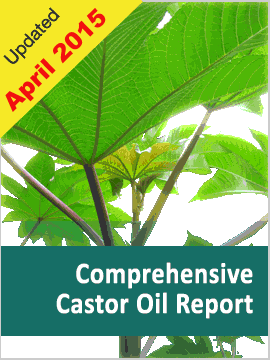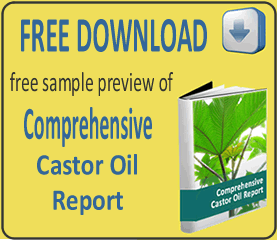Castor Oil Extraction Info @ CastorOil.in
CastorOil.in provides you links & resources related to castor, castor oil, castor derivatives & castor oil producers. We hope to make this a one-stop resource for all info about castor and castor products, and hope that you find this site to be of use.
This section of CastorOil.in provides details and web resources on castor oil extraction.
Note:
- If you are looking for Indian companies to source castor oil or castor oil derivative products, please see Castor Sourcing Directory.
- If you looking for inputs on other plant oils, please see Plant Oils WWW Resources ( Plant Oils A-Z )
- If you are looking for castor industry terms & definitions, see Castor Dictionary & Castor Oil Translations
A Comprehensive Report on Castor Oil from CastorOil.in – manufacturers, derivatives, castor oil chemicals end-uses, castor meal / cake, prices, manufacturing, cultivation, specifications – see here – all you wish to know about the world of castor, all in one report
The other sections @ CastorOil.in:
- Castor Oil & Castor Derivatives Sourcing
- Castor Crop Resources
- Castor Oil Extraction
- Castor Oil & Derivatives
- Uses of Castor Oil & Castor Derivatives
- Castor Oil & Derivatives Trade & Industry
- Castor Oil Research
Castor Oil Production
Castor seed is grown commercially on plantations but also harvested from wild plants. The seed must be hulled after harvesting. This can be done laboriously by hand or, more commonly, by machine. Small-scale hand-operated dehullers are available.
The seeds contain about 50 percent oil by weight. To extract the oil they must be crushed and pressed with hydraulic or continuous screw pressing at high or low temperature. High temperature hydraulic pressing yields 80 percent of available oil. Further solvent extraction can release much of the remaining oil.
Modification of the oil is achieved by a variety of chemical processes including oxidation, hydrogenation and thermal treatments to produce products for specific applications.
Castor Oil Extraction
Extraction of oil from castor seeds is done in a manner similar to that for most other oil seeds. The ripe seeds are allowed to dry, when they split open and discharge the seeds. These seeds are cleaned, cooked and dried prior to extraction. Cooking is done to coagulate protein (necessary to permit efficient extraction), and to free the oil for efficient pressing.
The first stage of oil extraction is pre-pressing, using a high pressure continuous screw press – called the expeller. Extracted oil is filtered, and the material removed from the oil is fed back into the stream along with fresh material. Material finally discharged from the press, called cake, contains 8 to 10 percent oil. It is crushed into a coarse meal, and subjected to solvent extraction with hexane (Hexane from Wikipedia, n-Hexane Data from ILO) or heptane (Heptane from Wikipedia, n-Heptane Data from ILO).
Oil Purification
Once the oil has been extracted from the seed, it is necessary to remove impurities from the oil.
The oil is essentially a pure triglyceride, and contains almost 90% of glyceryl tricinoleate. It is the ricinoleic triglyceride that is needed in order to produce high quality castor oil.
The steps to refining the crude oil include:
- Settling and Degumming of the oil - Done to remove the aqueous phase from the lipids, and to remove phospholipids from the oil. (Vegetable Oils Refining Plants Info from Pennwalt India, Oil Refining Process from Energy Manager Training – PDF, Degumming Processes from AOCS - PDF)
- Bleaching - Bleaching results in the removal of coloring materials, phospholipids (Phospholipids Info from City Univ of NY, Phospholipids from Cyberlipid) and oxidation products. (Oil Processing & Purification Information from ANARAC)
- Neutralization - The neutralization step is necessary to remove free fatty acids from the oil. This can be done in one of two ways: (a) Alkali (Chemical) or (b) Steam Stripping (Physical) means.(Vegetable Oils & Fats Processing Info from IISC, India)
- Alkali/Chemical Method: Caustic soda (alkali) is mixed in the proper amounts and the aqueous solution is removed, leaving the neutral oil behind.
- Steam Stripping: This is done under vacuum, to remove moisture, free fatty acids, odor bodies, and other impurities from the oil. As it is performed under vacuum conditions, the oil can be kept at a low temperature, preserving its chemical structure by not subjecting it to temperatures in which undesirable dehydration reactions can occur. (Distillation & Stripping Systems from Sutcliffe & Speakman)
- Deodorization of the oil - Deodorization results in the removal of odour from the oil

